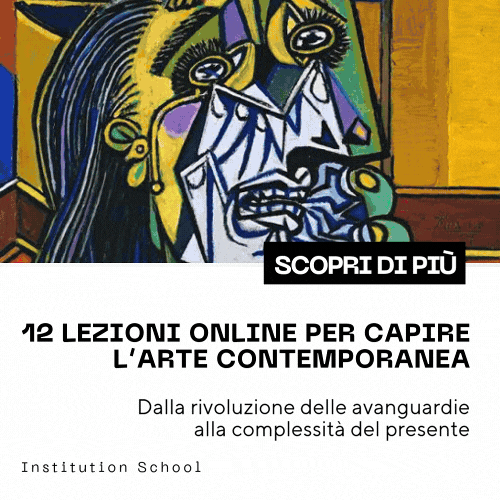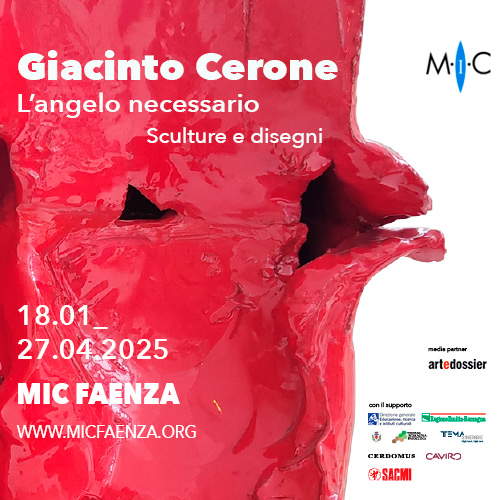Brescia dedicates an exhibition to Giuseppe Bergomi by displaying 84 of his works
From July 12 to Dec. 1, 2024, Brescia celebrates the Brescian figurative sculptor Giuseppe Bergomi (b. 1953) with a retrospective spread between the cloisters of San Salvatore and Santa Maria in Solario of the Santa Giulia Museum and the rooms of the Great Mile in the Castle. Giuseppe Bergomi. Sculptures 1982 / 2024, curated by Fondazione Brescia Musei, consists of 84 works in terracotta and bronze, created throughout the artist’s career. The exhibition is part of the larger project dedicated to sculpture in the spaces of Brescia Castle that Fondazione Brescia Musei inaugurated with the exhibition Davide Rivalta. Dreams of Glory (Castello, May 26, 2023-Jan. 15, 2024) by identifying precisely in this iconic place a space to dedicate to the enhancement of plastic art, in view of the forthcoming inauguration of an outdoor sculpture itinerary dedicated to Bruno Romeda and his companion and colleague Robert Courtright.
In Santa Giulia, on the other hand, the dialogue with the spaces of the Unesco Corridor is in ideal continuity with the experience of Archaeological Stages, which has brought artists such as Francesco Vezzoli, Emilio Isgrò and Fabrizio Plessi to confront the architecture of the monumental complex of Santa Giulia and the Archaeological Park over the past three years.
The chronologically ordered itinerary begins in 1978, the year in which Bergomi, fresh from his diploma at the Brera Academy, made his debut at the Galleria dell’Incisione in Brescia with an exhibition of paintings only, one of which, Lyon 1958, also opens the current exhibition. The pivotal moment, capable of turning his professional story around and convincing him to leave painting for the third dimension was the exhibition Les realismes 1919-1939 at the Centre Beaubourg in Paris, as Bergomi himself had occasion to say “this exhibition allowed me to understand that I had fallen into a misunderstanding.”
His parabola in the field of sculpture then began in 1982, with a solo show again at the Galleria dell’Incisione, where he proposed his first series of polychrome terracottas, composed of works that were intellectually mature but technically still in need of study and deepening. In this exhibition today, we can admire some of these works, characterized by the presence as a model of his wife Alma, a subject that will be a constant - like his daughters Valentina and Ilaria - in his research until recent days, and that underlines the importance of the biographical aspect in each of his creations.
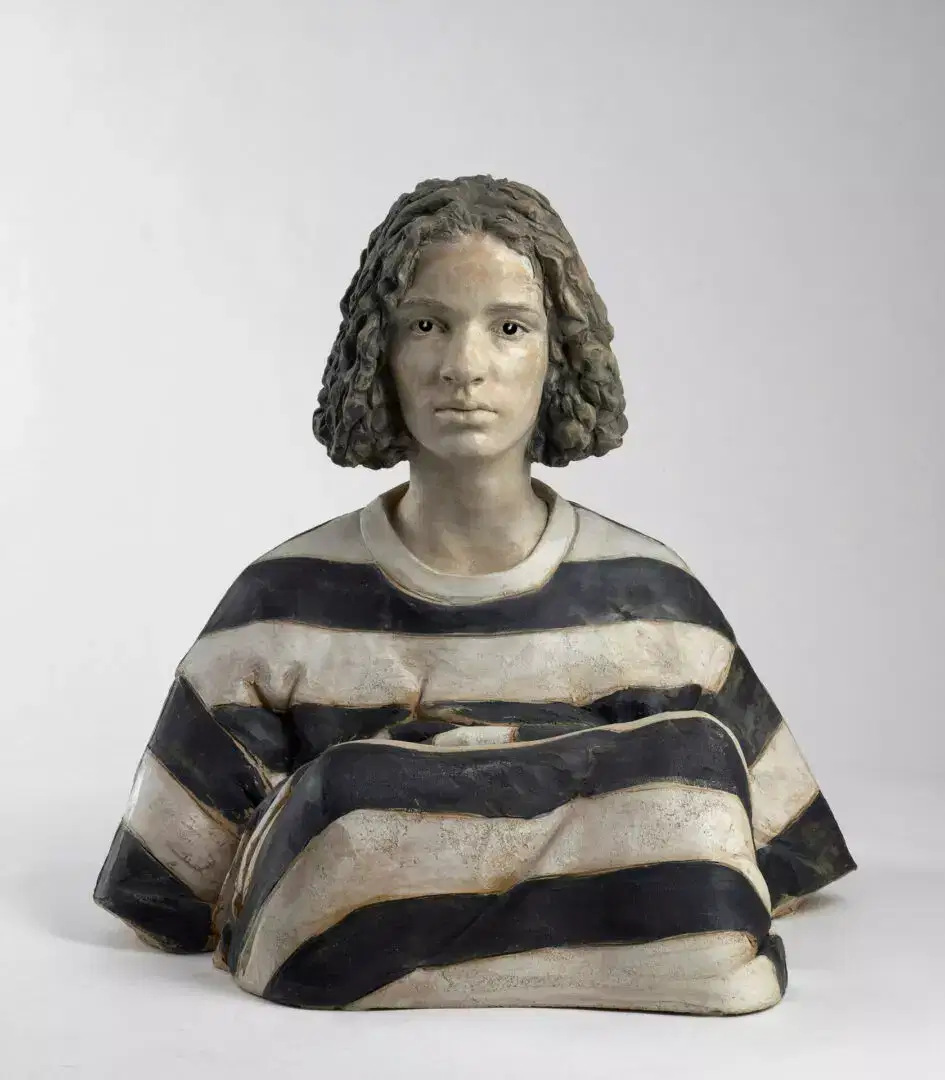
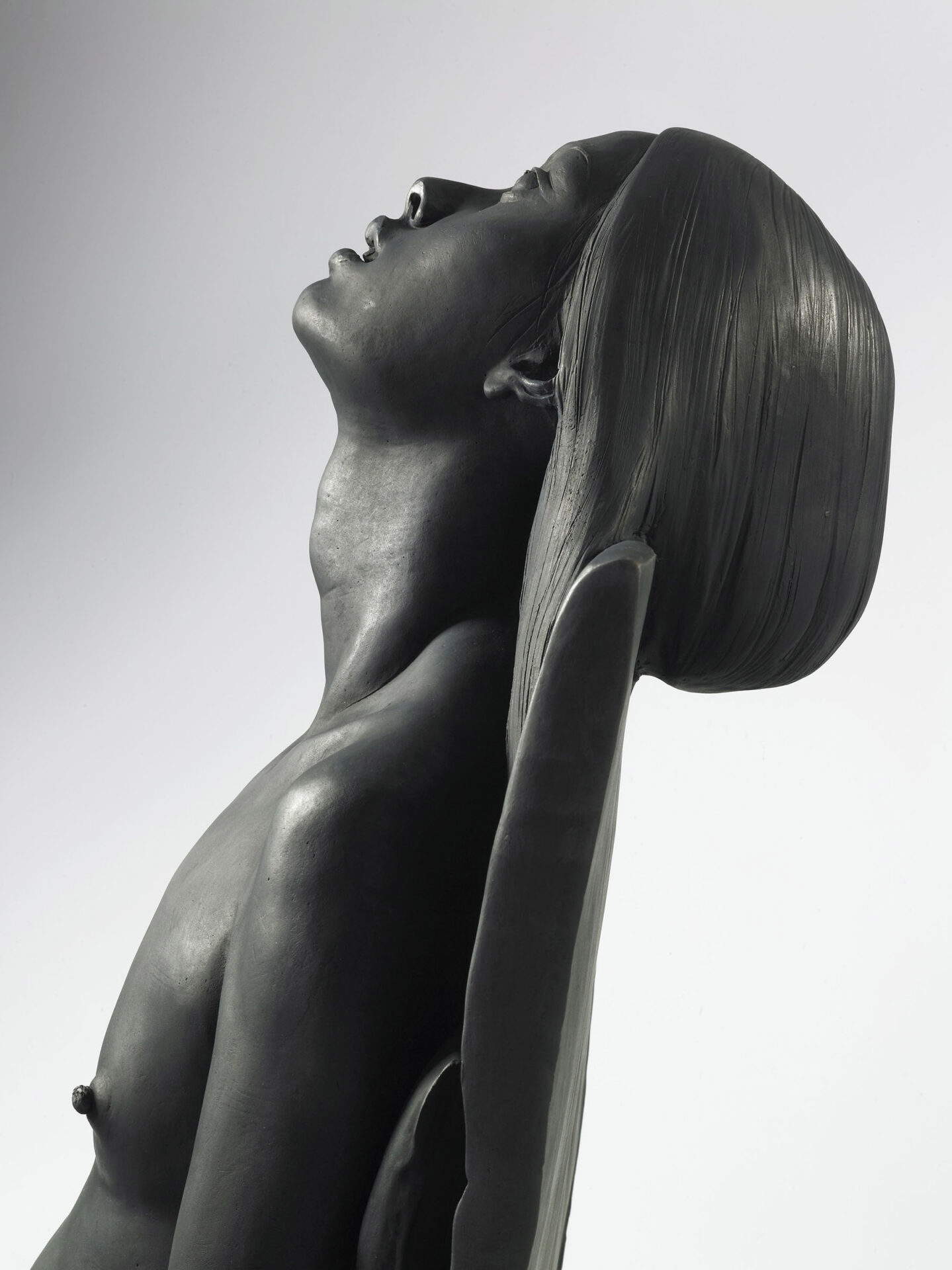
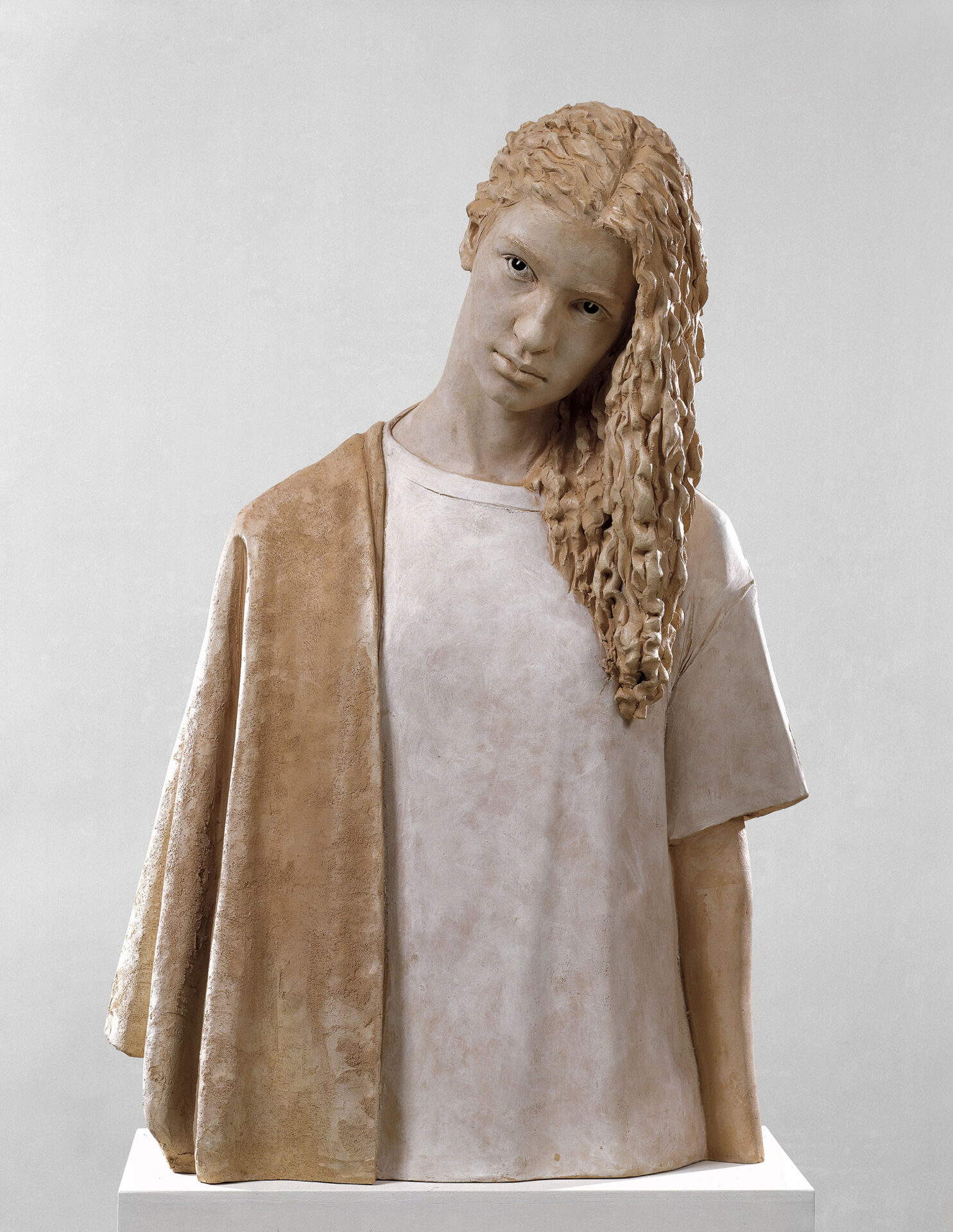
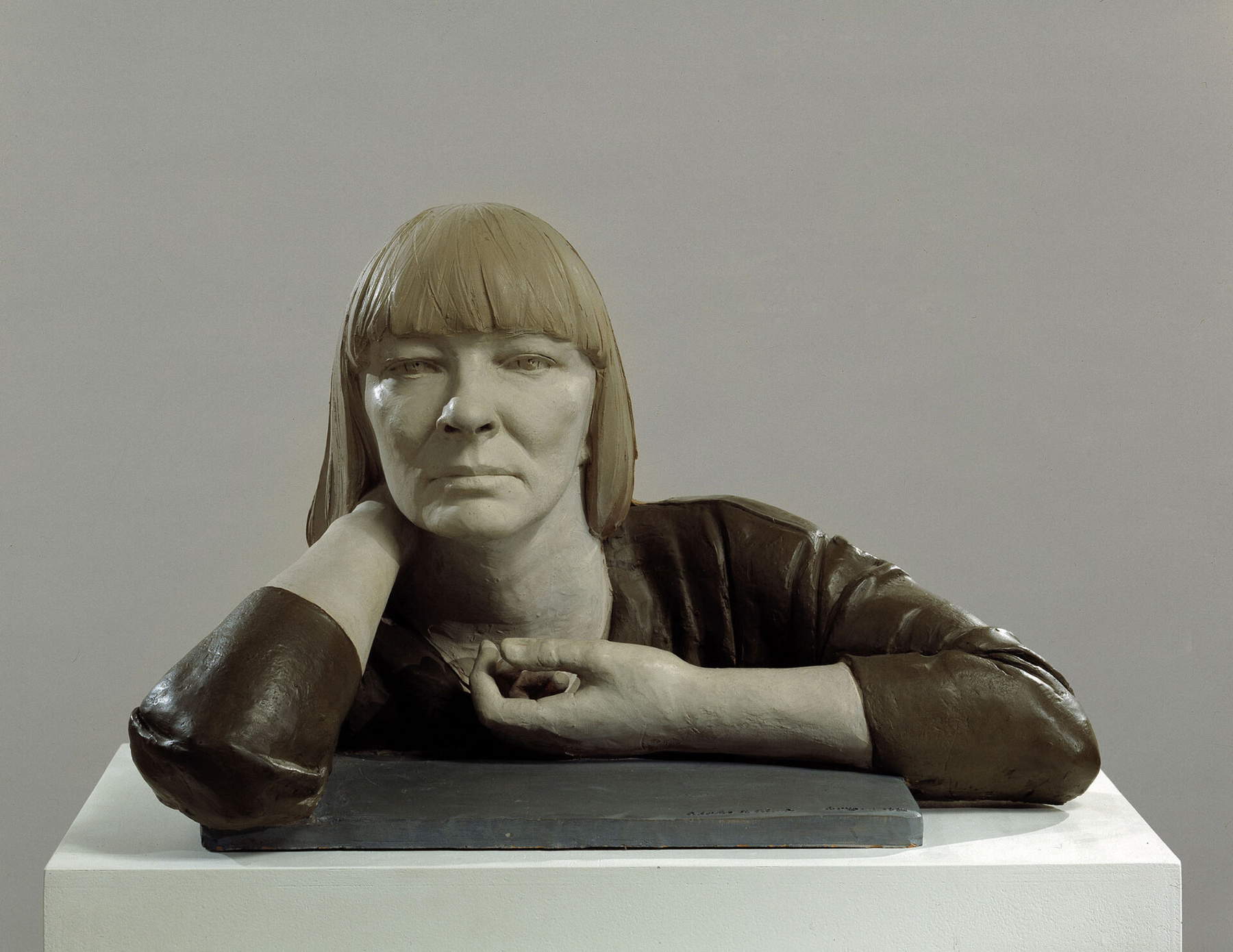



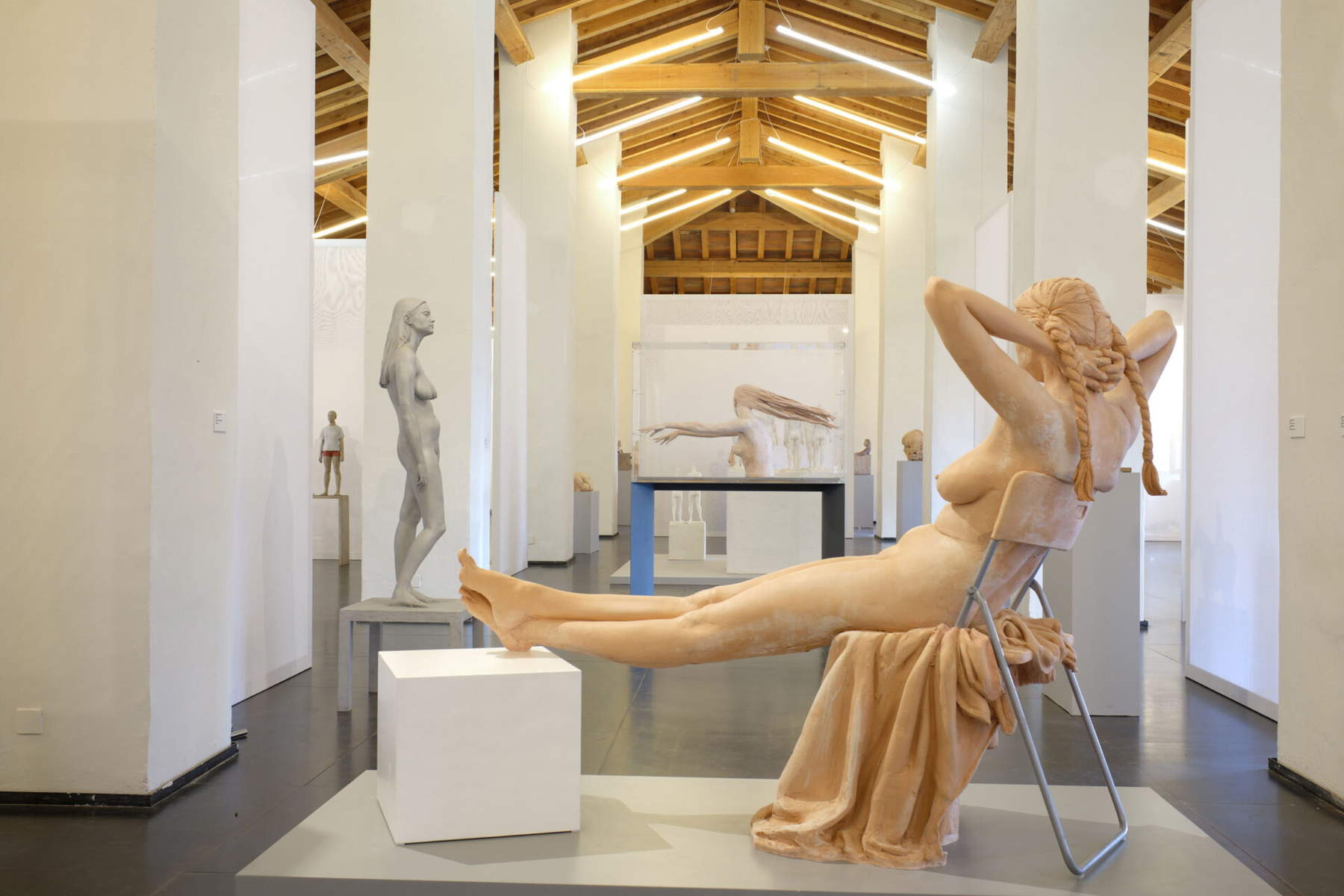

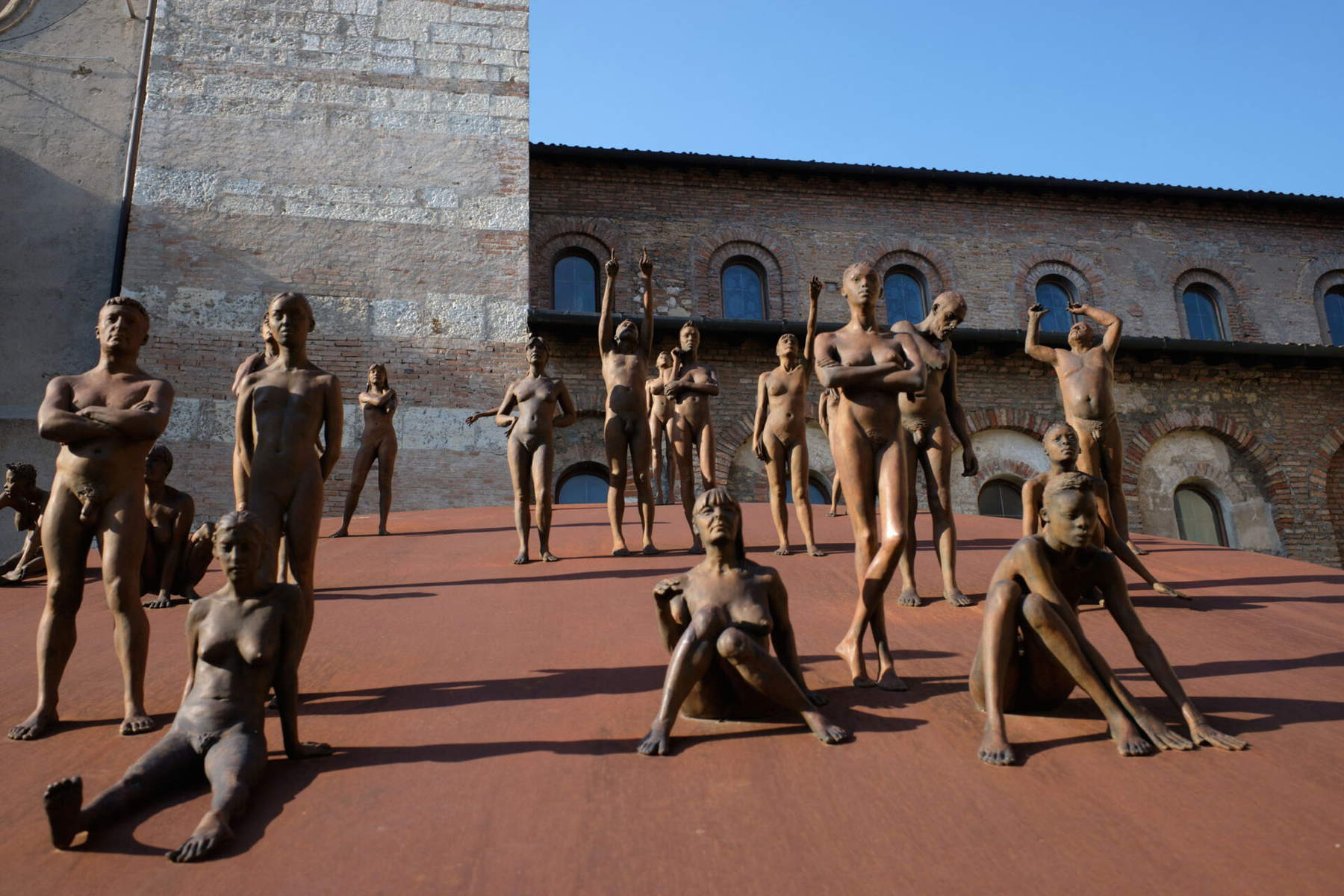
The exhibition continues with the phase in which, at the turn of the late 1980s and early 1990s, Bergomi’s terracottas lose their color. In this way, the artist takes up the age-old sculptural tradition rooted in ancient plastic, particularly Etruscan plastic, in an attempt to reconstruct, through the plasticity of the earth, an organic form. Belonging to this period are works such as Bagnante addormentata (1991), Grande nudo di adolescente (1991) or some portraits of his daughters Valentina and Ilaria, where the human figure is poised between the realism of representation and the projection of the subjects into an abstract dimension, dense with symbolic references.
In the 2000s, Bergomi switched from terracotta to bronze, giving rise to a new phase in his work. Exemplary works of this moment are Bathing Interior with female figure (2001), Ilaria’s busts with hats in different shapes, two bas-reliefs of his wife, or again one of his Self-portraits (2004), in which color, albeit on a new material support, returns to be a characterizing element.
It is precisely the creations of these years, including the grandiose Ellipse, deliberately set up in an evocative section housed in the outdoor spaces of the Santa Giulia museum, that amaze with the incredible dialogue between the volumes and the architecture of the monastery.
In more recent years Bergomi accepts the challenge of confronting public statuary: from Uomini, delfini, parallelepipedi made in 2000 for theNagoya Aquarium in Japan, to the monument dedicated to Cristina Trivulzio di Belgiojoso, the first public sculpture ever dedicated to a woman in Milan, to the monument for the victims of Covid, Cacciata dal Paradiso, for the Vantiniano cemetery in Brescia, a plaster sketch of which is presented.
Ideally closing the exhibition are the magnificent Africa with Cello, exhibited at the 2011 Venice Biennale, and the previously unpublished work Breakfast in Bed (2024), which, through its depiction of his wife, daughters and granddaughters, pays tribute to three generations of his family.
The exhibition is made possible by the valuable Romeda Fund for Contemporary Art.
For all information, you can visit the official website of Brescia Musei.
 |
| Brescia dedicates an exhibition to Giuseppe Bergomi by displaying 84 of his works |
Warning: the translation into English of the original Italian article was created using automatic tools. We undertake to review all articles, but we do not guarantee the total absence of inaccuracies in the translation due to the program. You can find the original by clicking on the ITA button. If you find any mistake,please contact us.






